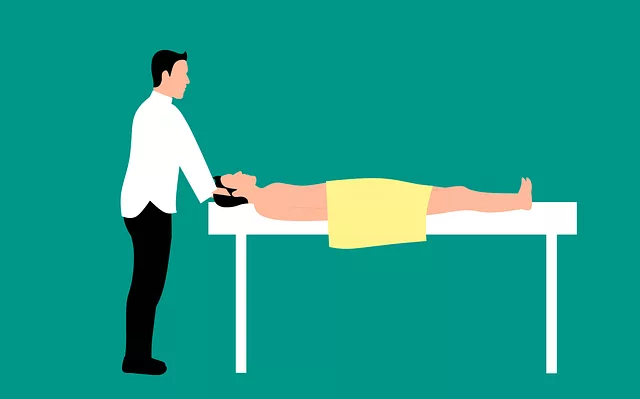Stress, a modern concern, arises from various factors impacting health. Yoga and meditation offer holistic solutions by calming the nervous system, reducing stress hormones, and promoting mental clarity. Yoga poses lower heart rate, blood pressure, and cortisol levels while mindfulness techniques encourage present-moment awareness. With diverse styles catering to different needs, yoga builds strength, flexibility, and tranquility. Meditation boosts emotional well-being and resilience through relaxation responses and reduced anxiety. Combining yoga and meditation provides a powerful stress relief therapy, improving focus, emotional regulation, physical health, and overall well-being. Starting with simple, guided practices and building consistent routines is key to effective stress management through these transformative techniques.
Stress is a modern-day epidemic, but ancient practices like yoga and meditation offer powerful solutions. This article explores how these holistic therapies can revolutionize your well-being by understanding stress, its causes, and impact on mental and physical health. From historical roots to scientific explanations, we’ll guide you through various yoga styles, effective meditation techniques, and practical tips for incorporating these stress relief therapies into your daily routine.
Understanding Stress: Causes and Impact on Well-being

Stress is a widespread issue that can arise from various factors, affecting individuals’ mental and physical well-being. It has become an integral part of modern life, with demanding careers, fast-paced lifestyles, and constant connectivity contributing to heightened stress levels. Understanding the causes of stress is essential in finding effective solutions for stress relief therapy.
The impact of chronic stress on the body and mind is profound. It can lead to increased anxiety, depression, insomnia, and even physical health problems such as cardiovascular disease and weakened immune systems. Navigating these challenges requires a holistic approach, where practices like yoga and meditation emerge as powerful tools to manage and alleviate stress. These ancient techniques offer a sanctuary from the hustle and bustle, enabling individuals to reconnect with their inner selves and find calm amidst the chaos.
Yoga: A Historical Practice for Mind-Body Balance

Yoga, an ancient practice originating from India, has been a go-to method for achieving mind-body balance for centuries. This holistic approach to well-being involves a combination of physical postures (asanas), breathing techniques (pranayama), and meditation, all designed to cultivate strength, flexibility, and mental clarity. By aligning the body and breath, yoga helps to calm the nervous system, reduce stress hormones, and promote a sense of inner peace.
In today’s fast-paced world, where chronic stress is prevalent, yoga serves as an effective stress relief therapy. Its benefits extend beyond mere relaxation; regular practice can lead to improved sleep quality, enhanced focus, and increased resilience to life’s challenges. Whether practiced in a studio setting or at home, yoga offers a sustainable and accessible way to nurture both the body and mind, making it a valuable tool for anyone seeking to manage stress and improve overall well-being.
The Science Behind Yoga's Stress-Busting Effects

The practice of yoga has been shown to have profound effects on reducing stress and promoting mental well-being. Scientific research has shed light on several mechanisms that contribute to its effectiveness as a stress relief therapy. One key factor is the physiological impact of yoga poses, or asanas, which can activate the body’s relaxation response, lowering heart rate and blood pressure. This activation of the parasympathetic nervous system helps counteract the stressful effects of cortisol, often referred to as the ‘stress hormone’.
Furthermore, mindfulness techniques inherent in yoga and meditation encourage a focused awareness on the present moment, allowing individuals to detach from anxious thoughts and stress-inducing patterns. Regular practice has been linked to changes in brain regions associated with emotion regulation and memory, suggesting that yoga can literally reshape how we respond to stressful situations. This holistic approach to stress relief therapy not only calms the mind but also strengthens the body, fostering a sense of balance and resilience.
Different Types of Yoga for Stress Relief

Yoga offers a diverse range of styles that can be tailored to individual needs, making it an excellent choice for those seeking stress relief therapy. Hatha yoga, for instance, focuses on slow, controlled movements and breathing techniques to calm the mind and body. This gentle approach is perfect for beginners or those looking for a peaceful practice to reduce anxiety.
Vinyasa and Ashtanga yogas are more dynamic and flow-based, connecting breath with movement. These styles can be invigorating and help build strength while also providing an effective stress release. The continuous flow allows practitioners to focus on the present moment, detaching from stressful thoughts and fostering a sense of tranquility.
Meditation Techniques to Calm the Mind

Meditation is a powerful tool within yoga for calming the mind and achieving stress relief therapy. One popular technique, mindfulness meditation, encourages individuals to focus on their breath and observe thoughts without judgment. By bringing awareness to the present moment, this practice can help quiet the mental chatter and reduce anxiety.
Guided visualization is another effective method, where one imagines peaceful scenes or calming environments. This technique not only relaxes the mind but also stimulates the body’s relaxation response, lowering heart rate and blood pressure. Regular meditation practices have been shown to improve emotional well-being and enhance overall resilience against stressful situations.
Combining Yoga and Meditation for Maximum Relaxation

Combining yoga and meditation offers a powerful one-two punch against stress, creating a holistic approach to relaxation that resonates deeply with the mind and body. Yoga’s physical postures, breathwork, and mindfulness practices prime the body for profound meditation experiences. As you move through poses, focus on your breath, and cultivate awareness of your senses, tension releases, allowing your mind to quiet and settle.
Meditation deepens this relaxation further, guiding your thoughts away from stressors and encouraging a sense of inner calm. Regularly incorporating these practices into your routine can transform your relationship with stress, fostering resilience and promoting long-term well-being through effective stress relief therapy.
Incorporating These Practices into Daily Life

Incorporating yoga and meditation into your daily routine can be a game-changer in managing stress. Start small, perhaps with just 10 minutes each day, and build from there as these practices become a natural part of your day. Consistency is key; regular sessions are more effective than sporadic, longer ones. Even brief moments of mindfulness throughout the day—like taking a few deep breaths before a stressful meeting or pausing to centre yourself during a break—can make a significant difference in reducing stress levels and enhancing overall well-being.
Consider setting aside dedicated time for yoga and meditation, such as first thing in the morning or before bedtime. Create a peaceful space that supports your practice; this could be a quiet corner of your home or even a favourite spot outdoors. There are numerous apps and online resources available to guide you through various poses and meditations, catering to all experience levels. Remember, stress relief therapy doesn’t have to be intricate; simple, regular practices can lead to profound changes in how you navigate life’s challenges.
Benefits Beyond Stress: Improved Mental and Physical Health

Yoga and meditation aren’t just effective stress relief therapies; they offer a wide range of benefits that extend to both mental and physical health. Regular practice can lead to improved focus, increased mindfulness, and better emotional regulation, all of which contribute to a calmer, more centered state of being. Physically, yoga strengthens muscles, enhances flexibility, and improves balance, while meditation has been shown to reduce blood pressure, lower cholesterol levels, and boost the immune system. These practices work synergistically to promote overall well-being, helping individuals achieve a deeper sense of relaxation and harmony both inside and out.
Starting Your Journey: Tips and Resources

Embarking on a journey of yoga and meditation for stress relief is an empowering step towards a calmer, healthier mind. To begin, start with simple, guided practices tailored to beginners. Numerous free apps offer gentle introductions, making it accessible for anyone new to these ancient practices. Online platforms like YouTube also provide a wealth of resources with videos covering various techniques, ensuring you can find the right style and pace for your needs.
Building a consistent routine is key. Set aside dedicated time each day, even if it’s just 10 minutes. Consistency breeds progress. Consider joining local classes or communities to connect with others on similar paths, offering support and motivation. Remember, stress relief therapy is a personal journey; be patient and embrace the process, allowing yourself to discover the transformative power of yoga and meditation.
